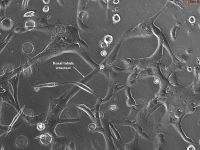It is widely recognized that the kidneys contain several enzymes capable of catalyzing the metabolism of drugs and toxicants to yield chemically reactive metabolites that can cause nephrotoxicity. Reactive metabolites generated in the kidneys, and metabolites translocated to the kidneys via the circulation after being formed in the liver, can also be detoxified in the kidneys. The kinetics of these bioactivation and detoxification reactions, which vary between chemicals and depend on the age, sex, renal cell type, and species involved, are important determinants of nephrotoxicity. This chapter reviews current knowledge and experimental approaches used to investigate the potential roles of renal cytochrome P450s (P450s) and flavin-containing monooxygenases (FMOs) in the metabolism and toxicity of three important industrial chemicals—1,3-butadiene (BD), trichloroethylene (TRI), and tetrachloroethylene (TETRA; also known as perchloroethylene)—as model compounds. The chapter illustrates examples of significant species-, tissue-, and sex-related differences in specific metabolic reactions. Because metabolic differences can be both qualitative and quantitative, depending on the chemical nature of the substrate, extrapolating data from one chemical to another, and among different genders and/or species can lead to inaccurate conclusions.






